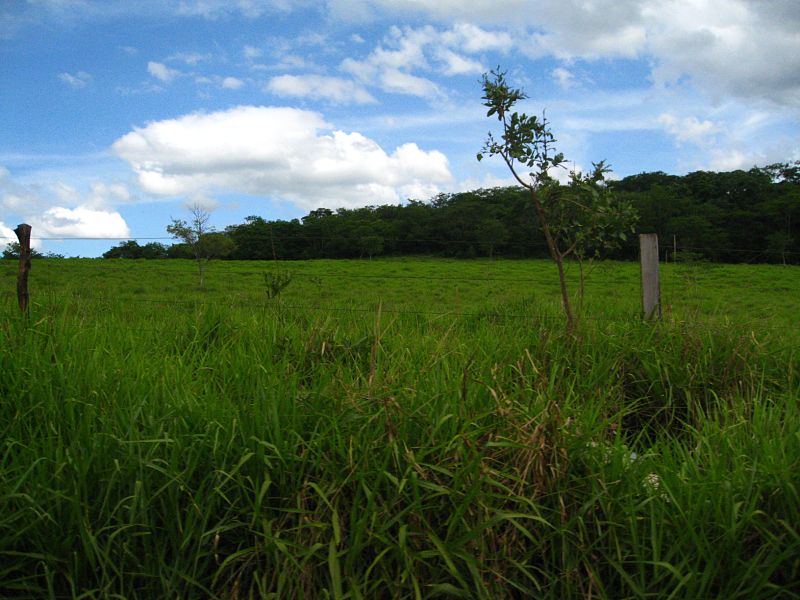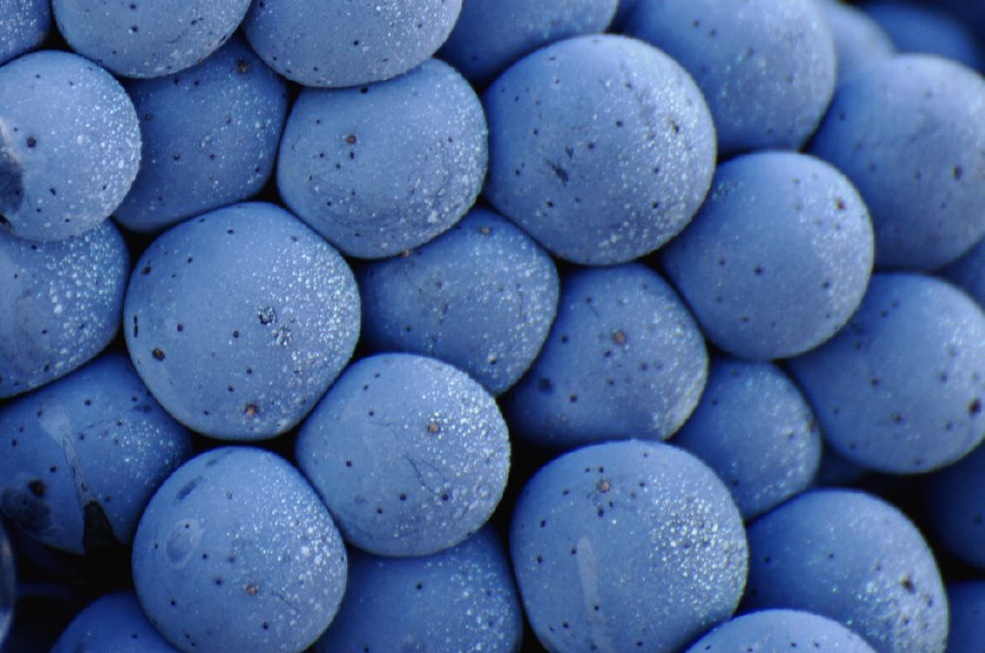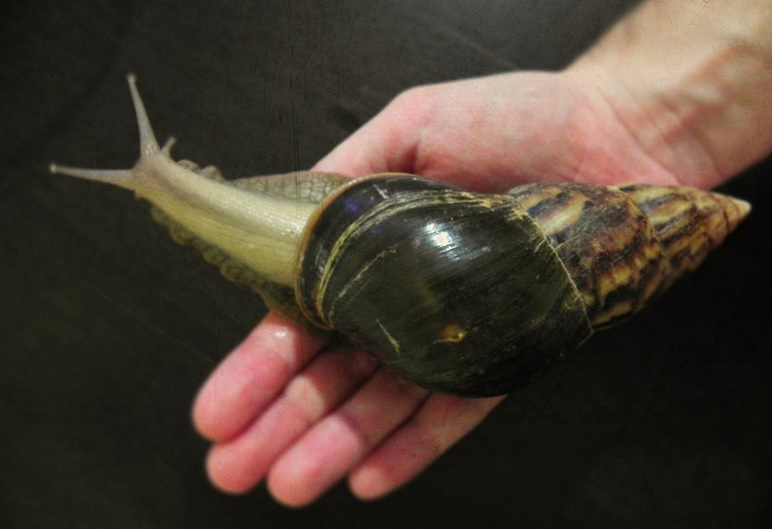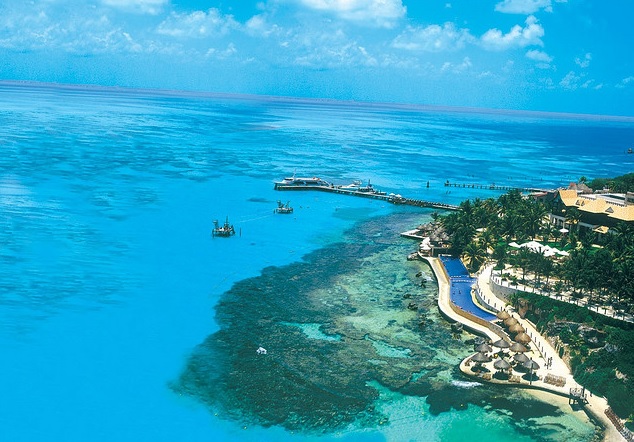In Patagonia
by Ross Barnett Continue reading In Patagonia
Science news out of Latin America
by Ross Barnett Continue reading In Patagonia
Ezequiel Petrillo in Argentina Ezequiel Petrillo (pictured above) is an Argentine biochemist studying how chloroplasts behave differently depending on the amount of light exposure. He is trying to understand how a plant self-regulates and adapts to different environmental conditions by employing alternative RNA splicing, a process by which a single gene can give rise to … Continue reading Five impressive scientists we met in 2014
Scientists in Argentina are developing educational video games and exploring their cognitive benefits beyond mere entertainment. Continue reading What happens in our brain when we play video games?
BRAZIL Brazilian scientists have discovered a slug that lives on the northwest coast of the country which they dubbed Tritonia khaleesi in honor of the character from the renowned television series “Game of Thrones.” The slug can grow up to 12 mm long and has a white stripe along the body that resembles the braid … Continue reading New ‘Game of Thrones’ slug found in Brazil, the ‘sponge effect’ of Latin America’s tropical forests, and Peru’s scientific cruise sails for Antarctica.
ANTARCTICA Certain regions of Antarctica could be storing climate data dating back to more than 1.5 million years, according to recently published Swiss and German scientists. Ice cores have small air bubbles and thus function as an “archive ” of the composition of the atmosphere of the time they were formed. http://www.youtube.com/watch?v=a1OP-fKcjHc ARGENTINA Scientists at INTA … Continue reading Argentinosaurus walks, 1.5 million-year-old Antarctic climate data, and scientists find the first poisonous crustaceans.
AMAZON More than 400 new species have been cataloged in the Amazon, says the World Wildlife Fund. ARGENTINA Argentine scientists have been studying whales off the coast of Patagonia for more than 30 years. Monitoring has been happening off the coast of the Península Valdés and 150,000 aerial images of 2,850 whales have been taken. Scientists at … Continue reading Monitoring whales in Argentina, gold mining and deforestation in Peru, and measuring biodiversity in the Amazon.
PERU Activists videotape the slaughter of dolphins off the coast of Peru. t.co/GRXDLE7mrw Corruption in Peru Aids Cutting of Rain Forest here. ARGENTINA AP finds deadly consequences of pesticide use in rural Argentina, dangerously close to schools here. BRAZIL Researchers in São Paulo develop nanoparticles to detect leukemia here. A fire in Brazil’s largest port burns … Continue reading Dolphins slaughtered off Peru’s shores, leukemia therapy in Brazil and tree species in the Amazon.
ARGENTINA Scientists in Argentina are studying the crab Chasmagnathus granulathus to study how memories are formed and altered in the brain. The researchers are studying the protein NF-kB which is implicated in forgetting–a process that is arguably just as important as remembering. Revista Anfibia’s photos are here. Argentine researchers are developing robots for incorporation into … Continue reading Argentine scientists study memory and forgetting in crabs, drug-trafficking in Bolivia’s Gran Chaco, and the state of science in Colombia.
ANTARCTICA An international team of scientists will study the melting of Antarctica’s Pine Island Glacier, which is currently melting at a rate of 6 centimeters per day. The team will measure glacier’s motion, map the bed of the glacier and explore the geology beneath the ice. ARGENTINA The National Institute of Agricultural Technology created a … Continue reading Using cassava to produce electricity in rural Colombia, teasing apart Chile’s salmon virus, and new coral discoveries in Latin America.
ANTARCTICA Brazil will rebuild the scientific base that burned down last year on King George Island in Antarctica. It will cover 4,500 square meters and include 17 laboratories for 64 people. ARGENTINA Researchers at the National University of Salta have developed low-cost solar water heaters for use by indigenous communities in the region. In addition, … Continue reading Engineering technology for health in Mexico, developing new food flours in the Dominican Republic, and biodiversity in Costa Rica
ANTARCTICA
A team of scientists has determined that a major cause of melting corresponds to the bottom of submerging ice shelves.

Researchers drilling to the bottom of Lake Hodgson of Antarctica have found microorganisms that date back 100,000 years. DNA studies will soon determine whether these findings are an unknown species.
ARGENTINA
A University of Mendoza study has demonstrated the neuroprotective effects of progesterone and their possible application as treatment for Parkinson’s disease. This research was commended by the Society of Biology of the Cuyo.
A team of researchers from the Universidad Nacional del Litoral has isolated bacteria from infant feces and breast milk for use in probiotics. The team’s intention is to grow up these microorganisms to commercial quantities so they can be incorporated into the daily glass of milk in low-income schools.
ARGENTINA
More and more Argentine scientists are following the lead of researchers that have used DNA to store texts, audios and pictures in sequences that were then inserted into bacteria. Scientists at the Universidad Argentina de la Empresa were able to store the first verses of the Argentine national anthem in a bacterium.

A transgenic orange plant was developed at the UBA that is resistant to citrus canker caused by the Xanthomonas bacteria. This plant bears a frog gene that confers antimicrobial properties.
CHILE
The 750 DECam megapixel camera, part of the Dark Energy Survey (DES ) and installed in the Victor M. Blanco telescope in Cerro Tololo, Chile will map one eighth of the sky to find out why there is accelerated expansion of our universe. The DES officially started August 31.
A Chilean-German diving project is forming with the aim of exploring Antarctic waters to document wildlife.
COLOMBIA
A Colombian physicist is part of
ARGENTINA
Scientists, patients and government entities in Argentina have reached an agreement to legislate stem cell therapies. The law “should address the scientific and therapeutic aspects of these cellular tools, always from a bioethical perspective, while guaranteeing the health protection of citizens,” stated Lino Brarañao, Argentina’s Minister of Science and Technology.

Recently, Argentina’s Ministry of Agriculture, Livestock and Fisheries passed a resolution for the evaluation of genetically modified crops like sugarcane and potatoes. This measure will allow two national institutions to progress in obtaining glyphosate tolerant sugarcase.
Argentine companies are working on breeding programs to increase protein levels in the soybean.
BOLIVIA
An international group of scientists led by Italian geographer Umberto Lombardo and Bolivian archaeologist José Capriles found in the Bolivian Amazon evidence of humans dating back 10,400 years. Their analysis concludes that hunter-gatherers settled there in the early Holocene. The work was published in the journal Plos One.
 |
by Ali Hendren
In 1988 at an agribusiness expo in Curitiba in southern Brazil, giant African land snails (Achatina fulica) were heralded as a promising new food source to replace smaller escargot snails. The introduction at the fair was so widely advertised and aggressively marketed that commercial breeders, cooperatives and even private homeowners began rearing the snails–endemic to eastern Africa–immediately with kits sold at the expo.
“The snails were supposed to represent social and economic progress for Brazil,” says Roberto Vogler, an Argentine scientist who studies the snails along the border his country shares with Brazil. “They were going to position the country as the world’s leading supplier of escargot.”
But a booming escargot market in Brazil never materialized. Many of the smaller producers had neither the means to properly process the meat nor the public demand to drive a now flooded market. Frustrated with their failed investment, operations were abandoned and snails were released into the wild in overwhelming numbers.
Today, the infestation has spread throughout Latin America–and not at a snail’s pace. They’ve invaded 24 of Brazil’s 26 states, spread through Venezuela and Colombia and have breached the borders of Paraguay, Argentina, Ecuador and Peru–posing both an agricultural and a public health threat. The snails are sweeping the continent carrying parasites and an appetite for most any crop.
The snails’ pace
On paper, the introduction of A. fulica for escargot farming in Brazil appeared promising. The snails are larger Continue reading “Giant African land snails are invading Latin America”
ANTARCTICA
Rising water temperatures will reduce the extent of krill habitat in Antarctica, say researchers.
ARGENTINA
A robot has been created by scientists in Mendoza for watering gardens. The system uses a similar technology to that used to detect movement in video games and moves around the garden on three wheels.

The Argentine Council for Information and Development of Biotechnology (ArgenBio) celebrates ten years of continuous broadcasting about biotechnology. Its educational program “Why Biotechnology” has trained more than 13,000 teachers across the country and worked with public and private entities in developing biotechnology in Argentina and Latin America.
BRAZIL
The Boticario Foundation for Nature Protection has launched a campaign aimed at the general public to raise awareness about the endangered jaguar (Panthera onca) which inhabits the Pantanal (a wetlands shared by Argentina, Brazil and Bolivia).
CARIBBEAN
80% of Caribbean coral reefs have been lost for many reasons, one being the attack of a bacterium that kills the coral. Eugene Rosenberg, a scientist at the University of Tel Aviv, identified phages that can control the bacterial attack and recover reef health. Continue reading “A bacterium hurting coral reefs in the Caribbean, a farmers strike in Colombia, and a tomb found in northern Peru.”
ANTARCTICA
The West Antarctic began to form approximately 22,000 years ago according to a study recently published in the journal Nature. They found, while analyzing a block of ice two miles deep, that a part of the white continent was formed long before the rest of the continent.

ARGENTINA
The South Atlantic, specifically the Gulf of San Jorge, will be studied jointly by Argentine and Canadian scientists, says the Ministry of Science and Technology of Argentina. The project will start in January 2014, will be done aboard the ship Coriolis II and require an investment of one million dollars.
For 10 years the Faculty of Agronomy at the UBA has been working with farmers in the municipality Daireaux, located 400 km from Buenos Aires. Through tax benefits, producers are encouraged to conserve soil and rotate crops in addition to adopting traditional farming practices in the area. The producers involved in the project have seen significant improvements in organic matter content and soil stability.
A group of scientists in Cordoba has created an innovative technology that allows people with physical disabilities to switch on the lights or lower the blinds in their homes through a system that decodes their brainwaves and transforms them into intelligible orders.